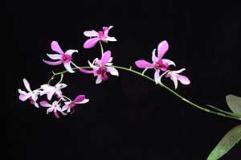The Botany Gardens Glasshouses
In 1946 the University purchased the estate of Plas Penglais. Within two years the house was extensively renovated and enlarged, while the wilderness around it was being tackled by the garden staff, who created the lovely garden, with lawns sweeping down to the little brook and beds of shrubby and perennial plants
These beds became known as the Order Beds because each one was planted up with plants belonging to the same flowering family or natural order. On the other side of the brook, on the east side of Plas Penglais drive (across Penglais Road opposite the main campus entrance), a large wooden- framed glasshouse was erected, along with a single storey brick building which now constitutes our present potting- and storage-sheds.
Tropical House
Ferns and Cycads
Flowering Plants (the Angiosperms)
Acknowledgments and contacts
Glasshouse staff: David Summers, Pat Causton, Ray Smith, Tom Thomas and helpers.
Tel: 01970 628612
Original text by Dr Ian Scott and Pat Causton


 Class Liliopsida (the monocots)
Class Liliopsida (the monocots) Class Magnoliopsida (the dicots)
Class Magnoliopsida (the dicots)